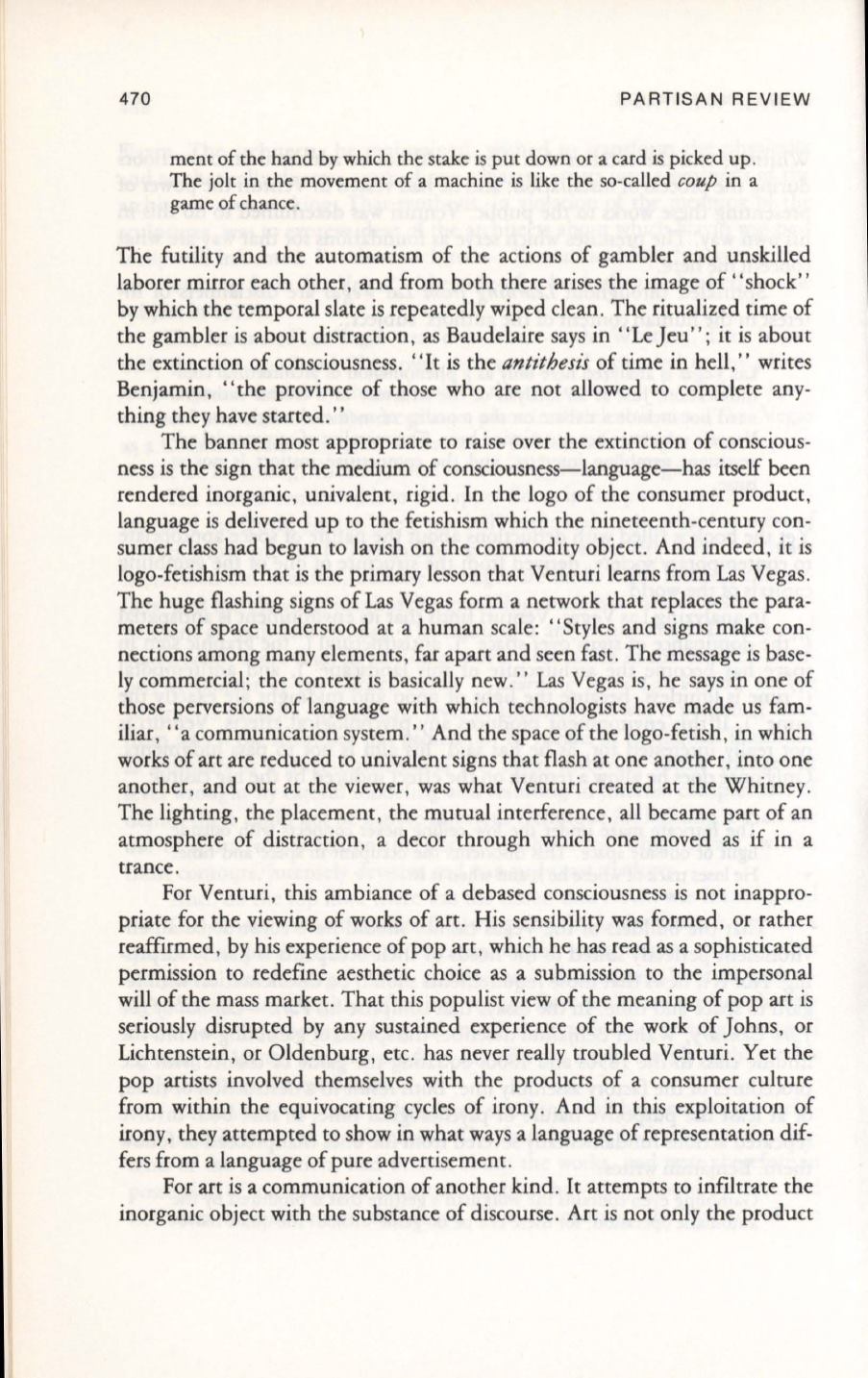
470
PARTISAN REVIEW
ment of the hand
by
which the stake is put down or a card is picked up.
The jolt in the movement of a machine is like the so-called
coup
in a
game of chance.
The futility and the automatism of the actions of gambler and unskilled
laborer mirror each other, and from both there arises the image of "shock"
by which the temporal slate is repeatedly wiped clean. The ritualized time of
the gambler is about distraction, as Baudelaire says in "Le Jeu"; it is about
the extinction of consciousness.
"It
is the
antithesis
of time in hell," writes
Benjamin, "the province of those who are not allowed to complete any–
thing they have started. "
The banner most appropriate to raise over the extinction of conscious–
ness is the sign that the medium of consciousness-language-has itself been
rendered inorganic, univalent, rigid.
In
the logo of the consumer product,
language is delivered up to the fetishism which the nineteenth-century con–
sumer class had begun to lavish on the commodity object. And indeed, it is
logo-fetishism that is the primary lesson that Venturi learns from Las Vegas.
The huge flashing signs of Las Vegas form a network that replaces the para–
meters of space understood at a human scale: "Styles and signs make con–
nections among many elements, far apart and seen fast. The message is base–
ly commercial; the context is basically new." Las Vegas is, he says in one of
those perversions of language with which technologists have made us fam–
iliar, "a communication system." And the space of the logo-fetish, in which
works of art are reduced
to
univalent signs that flash at one another, into one
another, and out at the viewer, was what Venturi created at the Whitney.
The lighting, the placement, the mutual interference, all became part of an
atmosphere of distraction, a decor through which one moved as if in a
trance.
For Venturi, this ambiance of a debased consciousness is not inappro–
priate for the viewing of works of art. His sensibility was formed, or rather
reaffirmed, by his experience of pop art, which he has read as a sophisticated
permission to redefine aesthetic choice as a submission to the impersonal
will of the mass market. That this populist view of the meaning of pop art is
seriously disrupted by any sustained experience of the work of Johns, or
Lichtenstein, or Oldenburg, etc. has never really troubled Venturi. Yet the
pop artists involved themselves with the products of a consumer culture
from within the equivocating cycles of irony. And in this exploitation of
irony, they attempted to show in what ways a language of representation dif–
fers from a language of pure advertisement.
For art is a communication of another kind .
It
attempts
to
infiltrate the
inorganic object with the substance of discourse. Art is not only the product


